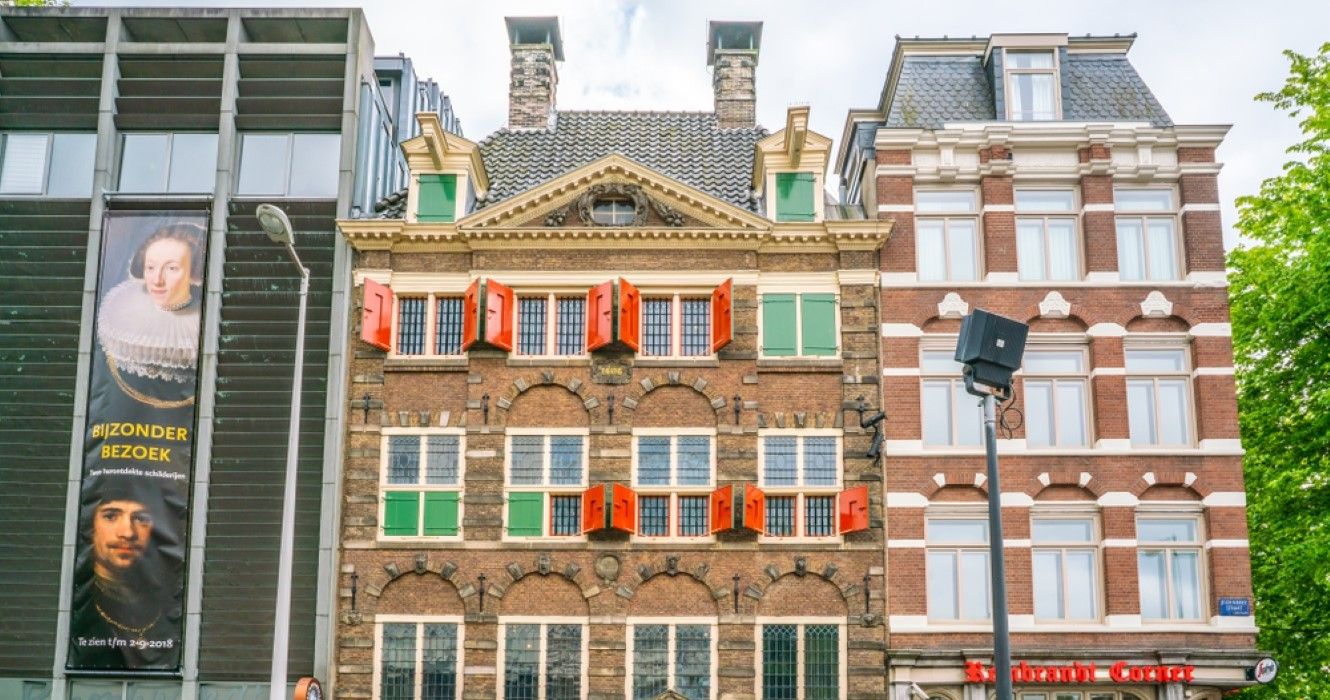Quick Links
Rembrandt, the master painter and printmaker of the Dutch Golden Era, lived from 1606 to 1669, but it wasn't until centuries later, in 1911, that his former home and studio in Amsterdam became the Rembrandt House Museum.
The artist (his full name was Rembrandt Harmenszoon van Rijn) lived and painted in the house at Jodenbreestraat 4 for about 20 years, working mostly as a sought-after portrait painter of the affluent Dutch. They were, as historians say, his glory years, when masterpieces such as “The Night Watch” were painted. Critics say his grand living style partly caused his bankruptcy, in 1652.
Already a widower when he lost his house, Rembrandt moved with his young son to a rental while others occupied his former home. Fast forward to 1907, and the dilapidated property was bought and renovated by the city of Amsterdam, and the museum was created.
Decades later, in 1998, a major upgrade added a modern annex, now used for special exhibitions, and restored the house to the way it would've looked when the artist lived there. The Rembrandt House Museum, located behind the city's famous Red Light District and a short walk from Dam Square, is typically open Tuesday through Sunday, and charges $15 for adult admission, $10 for students, and $6 for children. In December 2022 the museum will close for another renovation, reopening in early 2023.
View The Artist's Studios Inside Rembrandt House Museum
Visitors to the Rembrandt House Museum can view Rembrandt’s living quarters including the kitchen and bedroom, and two studios where he painted and taught aspiring artists, along with a room containing many art objects that are seen in his works.
Rembrandt was a prolific artist, creating some 300 paintings, nearly as many etchings, and an estimated 2,000 drawings. Much of his artwork was completed at the present-day Rembrandt House Museum and is on display there, but his major works are on view in other museums in Amsterdam and around the world.
Along with chronicling the life of Rembrandt, the museum hosts lectures, workshops, and artist events. In fall 2022, the exhibition “Rembrandt Revival” is on view. It explores other famous artists who were inspired by Rembrandt and followed his lead in creating etchings, including Manet, the 19th century French modernist painter.
Permanent Collection Features Many Rembrandt Etchings
The Rembrandt House Museum contains almost all the artist's famous etchings, which were in high demand by print collectors at the time. According to the museum, etching was not a hobby or sideline but rather a serious part of Rembrandt's work.
Rembrandt also painted 32 self-portraits, most of them in the late 1620s, experimenting with light and facial expressions. Many of the self-portraits are modest renderings, but one, during his most successful years, shows him as a nobleman, museum records say. The collection also includes his landscape etchings, sketched from 1640 to 1653 and inspired by his countryside walks outside Amsterdam.
Other inspirations for drawings and paintings came from the Bible, and he created some 80 prints tied to biblical subjects. Rembrandt also made dozens of etchings based on scenes of everyday life in Amsterdam, like musicians or street tramps.
Here's What Else To See Near Rembrandt House Museum
Since the Rembrandt House Museum is conveniently located in the center of Amsterdam, it's easy to stop by a few other notable attractions in the area.
Rijksmuseum, located on Museumstraat, is the national museum of the Netherlands and exhibits works by the Dutch masters including Rembrandt. His masterpiece “The Night Watch” is part of the collection, along with his “Self Portrait As The Apostle Paul,” “The Jewish Bride,” and “Man In Oriental Clothing.” The museum is open daily and charges a $20 entry fee to those 18 and up.
Oude Kerk, or Old Church, functions as an art institution and church on the Oudekerksplein, in the Red Light District. Built in the early 13th century, the museum displays old and new art in a medieval setting. Adult admission is about $12, and it's open daily.
Tourists can stop by the Hortus Botanicus, or the Botanical Garden, located on Plantage Middenlaan, and walk through of the world's oldest such gardens. It was founded in Rembrandt's day, in 1638, as an herb garden for doctors. That was around the time of the plague epidemic, and several monasteries that produced herbs had moved out of the city.
Today it's a sprawling garden with 6,000 plants, including a 2,000-year-old agave cactus and a 300-year-old Eastern Kape giant cycad. It's open daily, and the entry fee is about $9.
The Amsterdam Flower Market is located on the Singel canal between the Koningsplein and the Muntplein, and is the only floating flower market in the world. Held since 1862, the market features flower stalls on houseboats, and the types of flowers sold depend largely on the season. Besides flowers, vendors also sell Dutch souvenirs such as traditional clogs. It's open daily.

